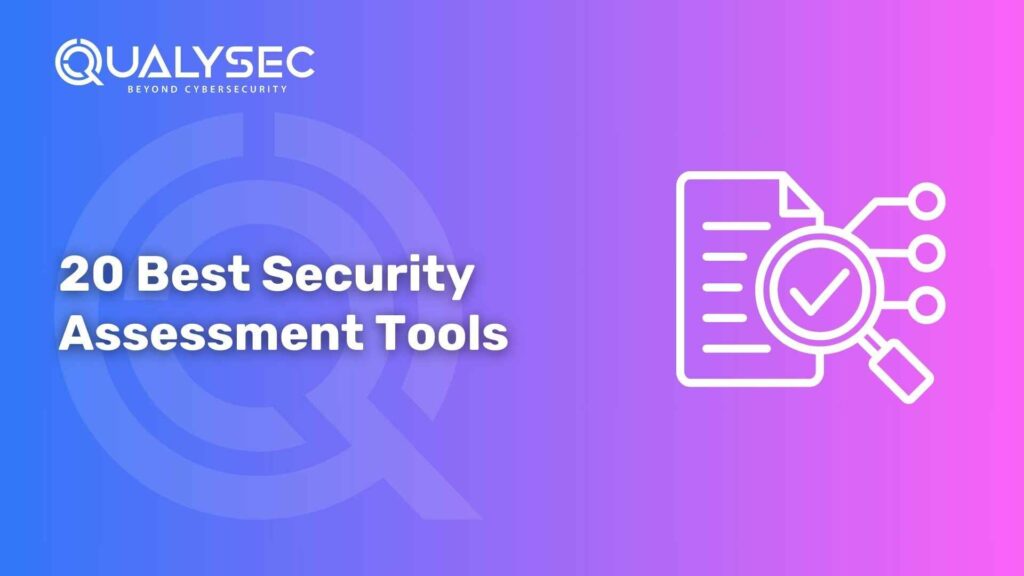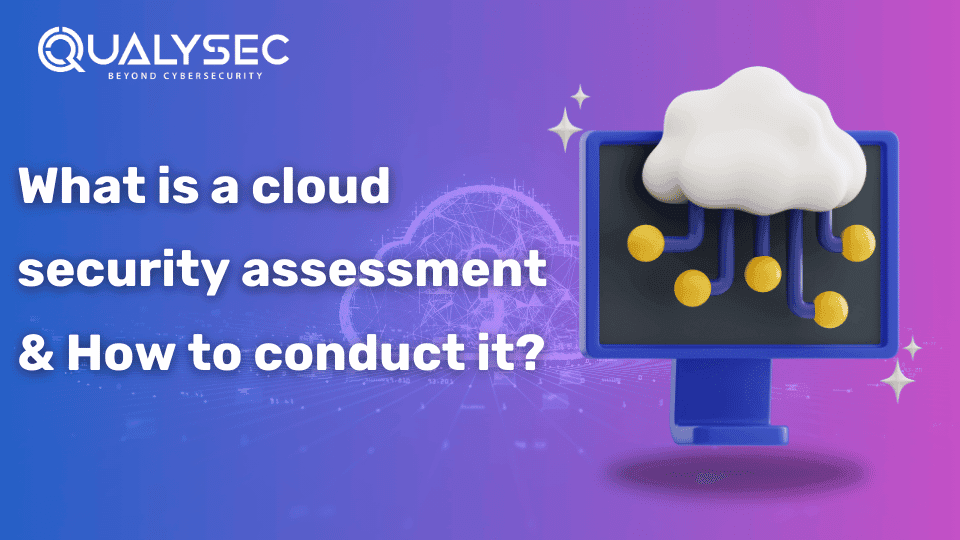20 Best Security Assessment Tools in 2025
Cyber threats continue evolving, and staying ahead means trialling security testing tools. From vulnerability scanning to penetration testing frameworks, the right security assessment tools will help enterprises identify vulnerabilities before they can be exploited against them. A glimpse of the top security testing tools of 2025 comes later, with some new functionalities to enhance security in networks, apps, and on the cloud. List of the Top 20 Security Assessment Tools in 2025 1. Qualysec Qualysec is a leading security assessment provider that helps businesses identify and fix vulnerabilities in their networks and applications. While it’s not a traditional tool, Qualysec offers expert-led penetration testing and vulnerability scanning services, ensuring strong cyber defenses. Key Features: 2. Invicti Invicti provides web application security scanning automatically to offer accurate vulnerability detection. It provides dynamic and static scanning for deep security scanning for DevSecOps teams. The tool also provides intelligent automation to remove false positives. Key Features: 3. Nmap Nmap (Network Mapper) is an open-source network security scanner and discovery tool. It scans ports, discovers hosts, and maps network topology. IT administrators use it extensively to scan vulnerabilities and weaknesses within a network. Key Features: 4. OpenVAS OpenVAS is an open-source IT infrastructure security scanner for vulnerability scanning. It has a huge database of known vulnerabilities and supports automatic scanning for wide security testing. It is suited best to be used by organizations for network security auditing. Key Features: 5. Nessus Tenable’s Nessus is a globally renowned vulnerability scanner. It scans for misconfigurations, malware, and outdated software that helps organizations stay compliant with security controls. Cybersecurity professionals use the tool to reduce the number of cyberattacks. Key Features: 6. Burp Suite Burp Suite is a feature-rich penetration testing tool used quite often in web security auditing. It provides automated and manual security testing, so it is good for security researchers and ethical hackers. The tool provides extensive analysis of web application vulnerabilities. Key Features: 7. RapidFire VulScan RapidFire VulScan is meant for Managed Security Service Providers (MSSPs) and offers real-time vulnerability scanning for several clients. It helps IT companies to tackle enterprises’ cybersecurity on an active basis. The solution offers auto-scanning and compliance management. Key Features: 8. StackHawk It is an application security tool that is automatable via CI/CD pipelines. StackHawk enables DevOps to scan for vulnerabilities while developing software. The application is used to facilitate end-to-end detection of security vulnerabilities before they are deployed. Key Features: 9. Cobalt.IO Cobalt. IO offers cloud security testing to enable organizations to identify web application vulnerabilities. It offers lead-based managed security testing. Organizations utilize the tool to scan threats in real-time. Key Features: 10. Wireshark Wireshark is a protocol analyzer that is generally used in security testing and live network monitoring. It does not have intrusion detection but can do deep packet inspection. It is used by security experts to analyze network traffic and look for abnormalities. Key Features: 11. QualysGuard QualysGuard is a cloud-based security scanner that provides on-demand security scanning for IT assets in cloud and on-premises environments. It has continuous security monitoring in the sense of automated compliance tracking and risk assessment. It is a scalable and vulnerability-laden solution that organizations appreciate. Key Features: 12. Acunetix Acunetix is a web vulnerability scanner for the future that is excellent at discovering SQL injections, XSS, and other web attacks. Using AI-driven scanning, it identifies web app and API vulnerabilities. Businesses handling sensitive data are provided with automated security testing and compliance reporting. Key Features: 13. Metasploit Framework Metasploit is a free penetration testing platform utilized by security experts to simulate attacks and assess network vulnerabilities. It has a vast database of exploits, vulnerability scans automatically, and penetration testing tools. Ethical hackers use it to test and strengthen cybersecurity defenses. Key Features: Latest Penetration Testing Report Download 14. Nikto Security Scanner This is an automated web server vulnerability scanner and can be used on websites and APIs. It is used primarily by SaaS businesses and e-commerce websites. It checks for security vulnerabilities, malware, and misconfigurations to prevent cyber attacks. With real-time scanning, it delivers continuous website protection. Key Features: Automated security scanning Web and API security testing Malware detection and removal 15. ImmuniWeb ImmuniWeb is an amalgamation of artificial intelligence-powered security testing and penetration testing with enterprise compliance management. It offers API security testing and risk-based vulnerability management. Organizations handling sensitive information depend on its compliance-based security features. Key Features: AI-powered security testing API security scans GDPR and PCI DSS compliance 16. Tenable.io Tenable.io is a cloud vulnerability management tool with real-time scanning, asset discovery, and compliance monitoring. It offers risk-based prioritization of security vulnerabilities to further enhance cybersecurity programs. It is utilized by businesses because of its enhanced vulnerability analytics and cloud security. Key Features: Cloud and container security Automated vulnerability scanning Risk-based prioritization 17. Burp Suite Enterprise Burp Suite Enterprise elevates the penetration testing feature of Burp Suite to the level of the enterprise organization for carrying out ongoing security testing. It is employed for inserting into security workflows for carrying out web security testing on a large scale. Organizations employ it to automate the detection of web application vulnerabilities. Key Features: Mass-scale web security testing Scanning and crawling automatically Security workflow integration 18. Syhunt Dynamic Syhunt Dynamic is a dynamic web security scanner that operates in real-time to identify vulnerabilities. It is designed to identify OWASP’s Top 10 security vulnerabilities as well as other web attacks. Developers and security analysts use it to identify source code security. Key Features: Automated security scanning OWASP Top 10 scanning of vulnerabilities Source code security analysis 19. Aircrack-ng Aircrack-ng is a test tool applied in wireless network pen-testing and wireless network security pen-testing. It is commonly applied to test Wi-Fi vulnerability and cracking bad encryption networks. Capture and analysis of the network packet is achieved by applying it for network security analysts. Key Features: Security test of the Wi-Fi network Capture and analyze the packet Cracking of WPA and WEP 20. ZAP (Zed Attack Proxy) ZAP





